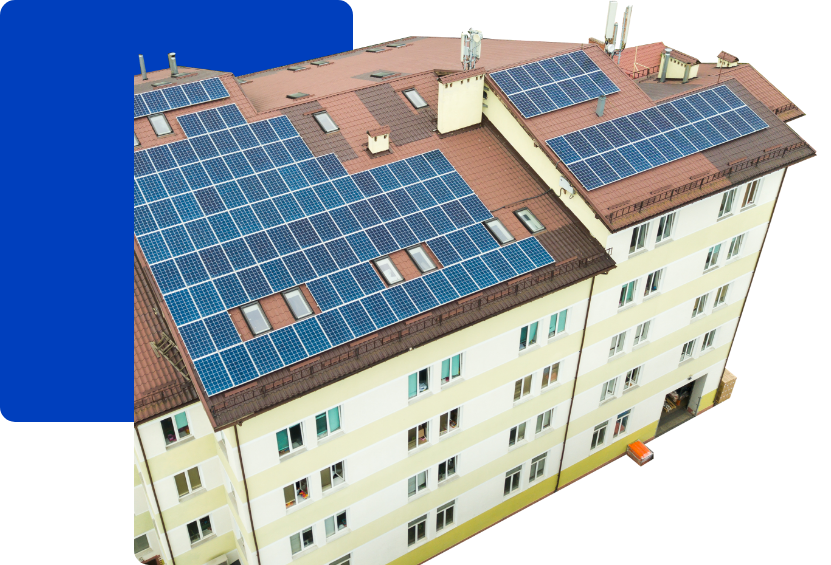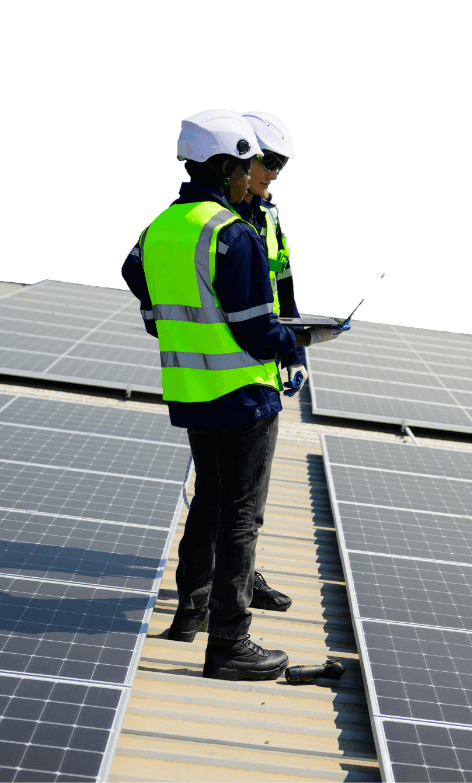Commercial Solar is a match made in heaven.
Most businesses primarily use energy during daylight hours, making them the perfect candidate for solar energy.
Leveraging Solar Energy in Commercial Settings
While solar has many benefits, let’s be honest, the most commonly sought-after is financially motivated. Most commercial businesses run a 9am to 5pm schedule; most of the energy required during this time can be drawn directly from a solar system. This generally leads to a very impressive return on investment.

From Expense to Investment: How Solar Energy Can Generate Significant Business Savings
Due to the varying scale of energy usage between businesses, the solution to each business’ energy needs is as unique as they are. Commercial properties can often require varying sized panels, depending on how the building is structured – we highly recommend sitting down with one of our experts. In this meeting they’ll be able to inspect the property, provide a roof map for the property and run you through your potential savings with each system.
Why Lamora Energy Is a Perfect Fit for your Business
Bespoke Solar Solutions Tailored to Your Business Needs for a Profitable, Eco-Friendly Future
Reliability
With years of solar industry expertise under our belt, we’ve successfully catered to the energy needs of over 1,000 Australian businesses, earning their trust.
Customised Solutions
Each solar system we design is tailored to the specific needs of your business—considering your budget, energy consumption, location, and sustainability objectives.
Product Range
Experience substantial cost savings with solar batteries, reducing energy bills by storing excess solar power for use when the sun isn’t shining.
Cost Savings
Experience substantial cost savings with solar batteries, reducing energy bills by storing excess solar power for use when the sun isn’t shining.




Illuminating Company Savings and Financial Growth Through Solar Energy
At Lamora Energy, we are dedicated to helping Australian businesses thrive through cost-effective and eco-friendly solar solutions. Contact us to explore our range of commercial solar options to maximise your savings, enhance sustainability, and drive substantial financial growth for your company.
Energy savings
Slash Your Costs: Average Businesses Enjoy a 73% Reduction in Energy Expenses
C02 Emmission Reduction
Join the Climate-Positive Movement for a Greener Business Future
A Rising Trend
25% of Australian Businesses Already Harnessing Solar Energy
What Our Clients Say
"A very good experience overall
"After researching solar for my home and obtaining several prices,
"Lamora visited and explained in simple terms
Frequently Asked Questions
What is the cost of installing a residential solar system?
The cost varies depending on size, brand, and location, but a rough estimate is $1,000 to $2,500 per installed kilowatt (kW).
What government incentives or rebates are available for installing solar panels?
In Australia, the most common incentive is the Small-scale Renewable Energy Scheme (SRES) and the Large-scale Generation Certificates (LGCs). These can significantly offset costs.